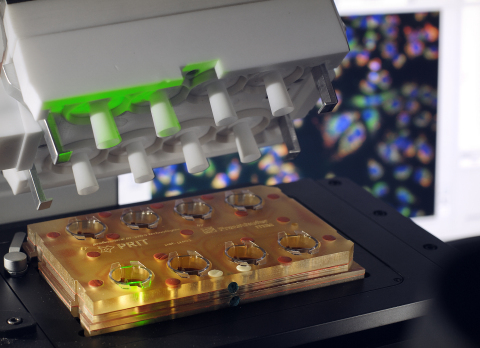HANNOVER, Germany--(BUSINESS WIRE)--Fraunhofer researchers will present selected ex-vivo test methods established at the Fraunhofer ITEM and an innovative in-vitro exposure system developed and patented by Fraunhofer: P.R.I.T.® ExpoCube®. These are used primarily to test airborne and inhalable substances. The question of acceptance of alternative methods for risk assessment in different registration procedures will be another topic the Fraunhofer scientists intend to discuss.
Alternative methods are playing an increasingly important role in toxicological contexts – for ethical, political, and also economic reasons. Assessment of risks that can result from inhalation of airborne materials, aerosols, (nano-)particles or fibers at present still requires performance of animal experimental studies. Application of suitable in-vitro methods could reduce the number of these experiments. At the Fraunhofer ITEM, several such alternative methods have been developed or refined and have already been successfully applied. They will be presented by Fraunhofer scientists at the SOT meeting and discussed with interested visitors.
One such test method is the isolated perfused lung, an ex-vivo model that has proven to be a useful screening tool to test surface-active substances for acute lung toxicity. This model allows measurement of the breathing parameters tidal volume, lung compliance and resistance, and formation of edema and atelectasis can be detected. Very useful tools for inhalation toxicity assessment are organ-specific tissue slices such as precision-cut lung slices (PCLS). This complex model can be used, for example, to predict immune responses or the toxic potential of substances. Tissue from different species (e.g. mice, rats, primates, or man) can be used.
In-vitro testing of airborne and inhalable substances requires appropriate exposure systems: Fraunhofer scientists have developed the P.R.I.T.® exposure system for cell-based assays. It allows cells and tissues at the air-liquid interface to be exposed in vitro to gaseous, aerosolized or particulate test substances under standard culturing conditions. In inhalation toxicology contexts, this system can be used with cell cultures, primary cells, or tissue from the respiratory tract.




